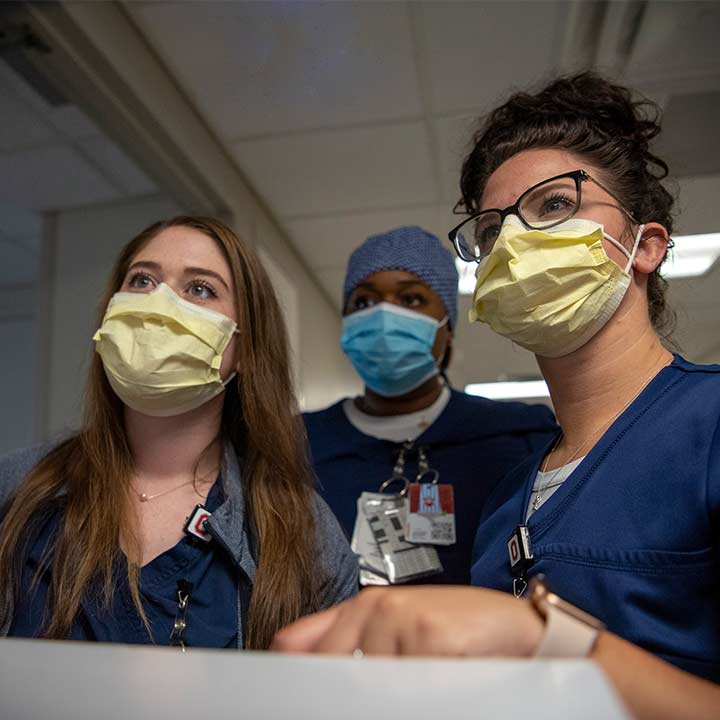
Anti-racism curriculum and assault victim curriculum
 When medical residents and fellows choose to further their training at The Ohio State University College of Medicine, they immediately have a stake in patient safety and the quality of health care being delivered on one of the most comprehensive health science campuses in the country.
When medical residents and fellows choose to further their training at The Ohio State University College of Medicine, they immediately have a stake in patient safety and the quality of health care being delivered on one of the most comprehensive health science campuses in the country.
Quality improvement (QI) is purposefully built into the curriculum. While providing hands-on patient care as frontline providers, residents and fellows interact with all parts of the health care system. This makes them well suited to identify and address quality and patient care issues.
Scott Holliday, MD (external link), associate dean for Graduate Medical Education (GME) and associate professor of Internal Medicine at the Ohio State College of Medicine, says one part of medical training is giving physicians the knowledge and experience to practice medicine. Another part is to teach them to know when something isn’t quite right.
“They see and experience glitches in our complex system and they know when something is off,” says Dr. Holliday. “We have a system in place that empowers them to report these glitches so they can be examined and remedied.”
The House Staff Quality Forum (HSQF) was founded in 2013 and sets residents and fellows on a career path that embodies continual improvement in patient safety and quality in medicine.
Residents and fellows from all GME programs and specialties meet monthly to review patient safety event reports submitted by fellow residents and fellows, which identify an area of patient care or safety that needs attention.
“We discuss what happened, what should have happened and determine if there is an opportunity for improvement,” says Amber Clevenger, GME quality program outcome manager.
Kyle Stinehart, MD, is a third-year pulmonary and critical care medicine fellow and HSQF member. His group of fellows noticed that patient transition practices into and out of the medical intensive care unit (MICU) were inconsistent. Quality reports reviewed at HSQF and a survey of an interdisciplinary group of nurses, respiratory therapists and other stakeholders echoed their concern.
The group noted that since patients coming into the MICU are critically ill by definition and demand complex care, the handoff from one care team to the next needs to be comprehensive to avoid errors and decrease duplication of work.
“Our team of fellows is building on a process that was adapted in the surgical intensive care unit a few years ago to work with an interdisciplinary team to standardize this process in the MICU,” says Dr. Stinehart. “All of this has been through a collaboration with HSQF.”
Another HSQF member, Benjamin Rausch, DO, an anesthesiology resident, says he and his peers complete yearly group QI projects as part of residency training. In alignment with the emphasis on quality improvement, the anesthesiology residents utilized the Patient Safety Reporting System (PSRS) to identify more than 150 safety events and discovered most were deemed “good catches.”
“A good catch is determined to be an event that was prevented because a member of the health care team spoke up,” says Dr. Rausch. “The PSRS is not designed to be punitive, but to celebrate the good catches that prevent harm and point to areas that need further improvement.”
The HSQF is a flagship program of Ohio State that elevates the level of education and training learners receive and use in future practice.
“We send one-third to one-half of our graduates out into practices around Ohio,” says Dr. Holliday. “HSQF sets them up to engage in constant improvement.”